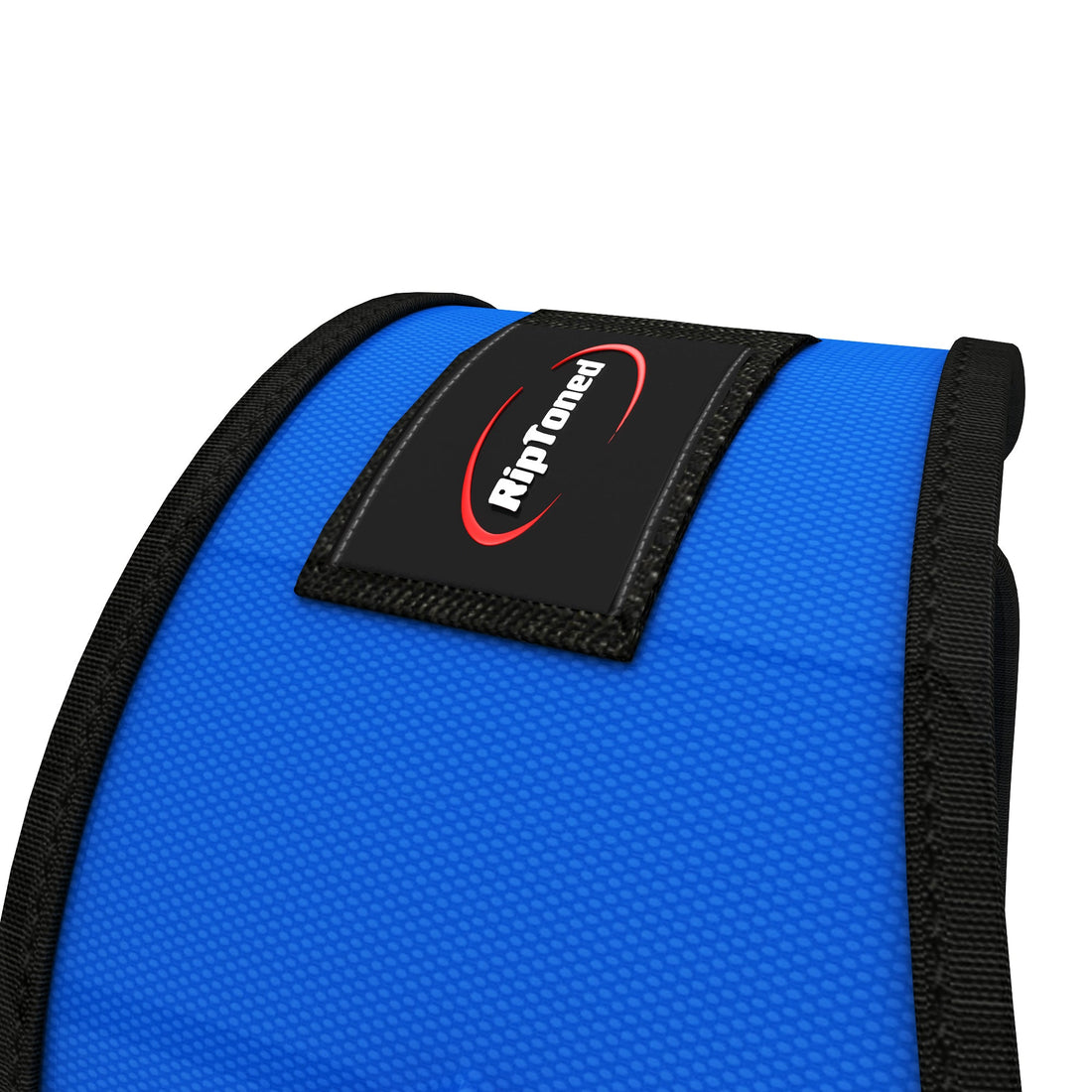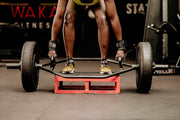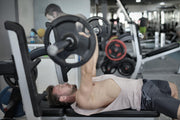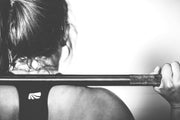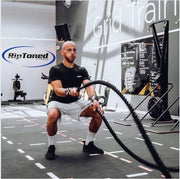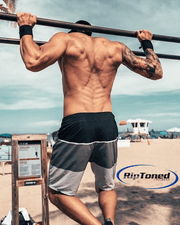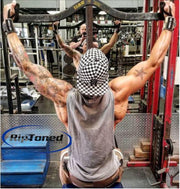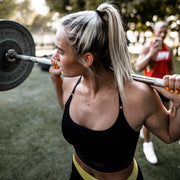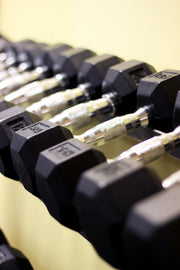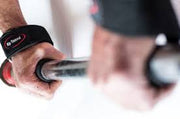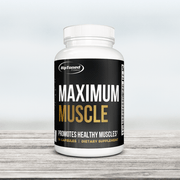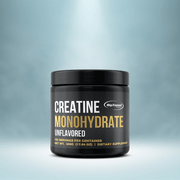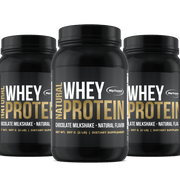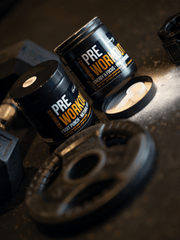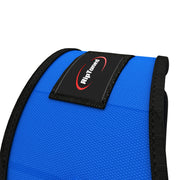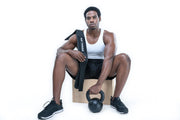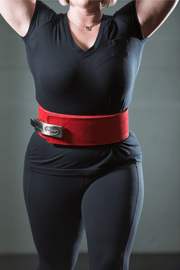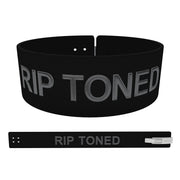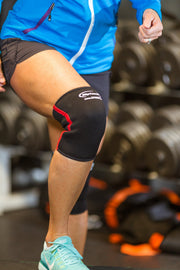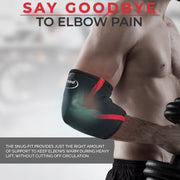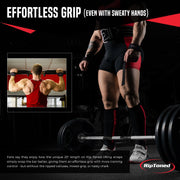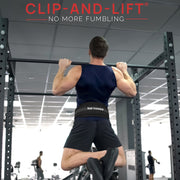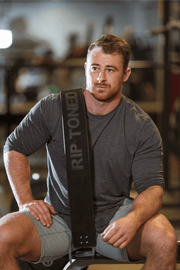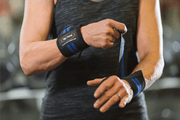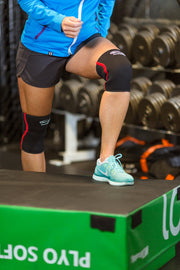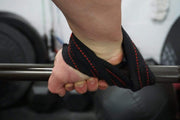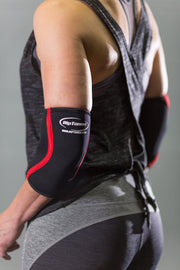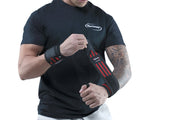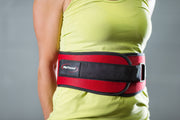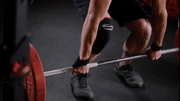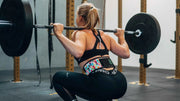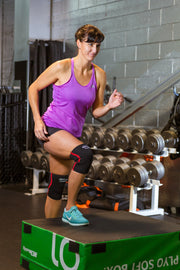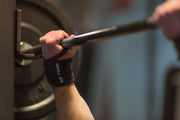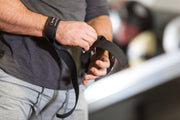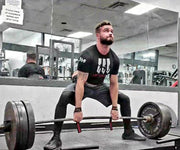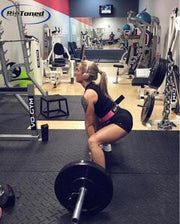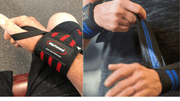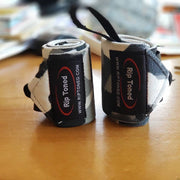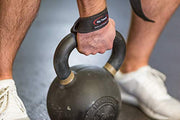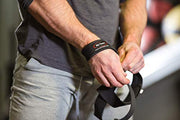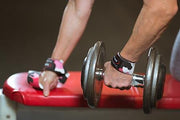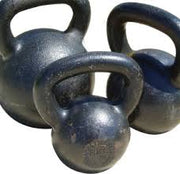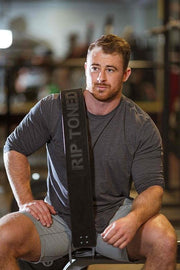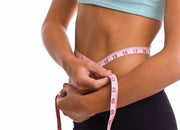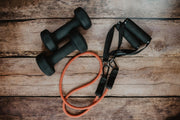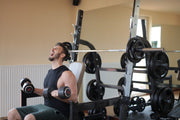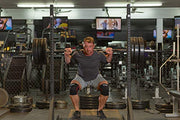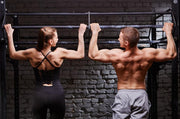Weightlifting and powerlifting are two popular sports that involve lifting heavy weights. To safely execute these lifts, athletes often use supportive gear such as weightlifting belts. However, there is often confusion between the terms "weightlifting belt" and "powerlifting belt".
While they may seem similar, there are some key differences between the two that can greatly impact an athlete's performance and safety. In this article, we will explore the differences between weightlifting belts and powerlifting belts, their purpose, and how to choose the right one for your lifting needs.
What is a Weightlifting Belt?
A weightlifting belt is a supportive gear worn around the waist during weightlifting exercises. It is typically made of leather or synthetic materials and has a thickness ranging from 4 to 13 millimeters. The width of a weightlifting belt can vary, with most being around 10 centimeters wide.
The main purpose of a weightlifting belt is to provide support and stability to the core muscles during heavy lifts. It does this by increasing intra-abdominal pressure, which helps to stabilize the spine and prevent injury. Additionally, wearing a weightlifting belt can also help an athlete maintain proper form and technique while lifting.
Weightlifting belts are commonly used in Olympic weightlifting, where athletes perform the snatch and clean & jerk exercises. These movements require a significant amount of strength and stability from the core muscles, making a weightlifting belt an essential piece of equipment for many athletes.
What is a Powerlifting Belt?
A powerlifting belt is similar to a weightlifting belt in its purpose but differs in design. It is typically made of thicker and stiffer material, ranging from 10 to 13 millimeters in thickness. The width of a powerlifting belt is also narrower, around 7 centimeters wide.
Powerlifting belts are mainly used in the sport of powerlifting, which involves three main lifts: squat, bench press, and deadlift. These lifts require a significant amount of core stability and strength, making a powerlifting belt an important piece of equipment for many powerlifters.
The main difference between a weightlifting belt and a powerlifting belt is the level of stiffness and support they provide. Powerlifting belts are designed to be stiffer, which provides more support to the core muscles during lifts. This added stability can help an athlete lift heavier weights with proper form and technique.
Main Deffrences Between Weightlifting Belt and Powerlifting Belt
While weightlifting belts and powerlifting belts serve a similar purpose, there are some key differences between the two that athletes should be aware of. These differences can greatly impact an athlete's performance and safety during heavy lifts.
Width
The width of a belt is a crucial factor in how it performs and affects the athlete's body during different types of lifts. Weightlifting belts are generally wider, often reaching up to 10 centimeters (about 4 inches), providing a broad surface area for pressure distribution across the abdomen and lower back. This wide design is particularly beneficial in Olympic weightlifting, where athletes undergo rapid, high-intensity movements such as the snatch and clean & jerk, necessitating extensive support around the midsection to safeguard against injuries and promote stability.
Conversely, powerlifting belts tend to be narrower, around 7 centimeters (approximately 2.75 inches) wide. This reduced width is intentional, aiming to offer substantial support without hindering the lifter's ability to flex and extend the torso, crucial for the squat, bench press, and deadlift. The narrower belt ensures that the athlete can maintain optimal form while benefiting from increased intra-abdominal pressure for enhanced core stability.
Choosing between these widths largely depends on the specific requirements of the athlete's sport and personal preference. The wider surface of a weightlifting belt is suited for athletes needing more extensive support for dynamic movements, while the narrower powerlifting belt caters to those seeking concentrated support that aligns with the demands of static, heavy lifts.
Thickness
The thickness of a belt is another significant factor in its performance and support for the lifter. Weightlifting belts are typically thinner, ranging from 4 to 13 millimeters, while powerlifting belts are thicker, often varying between 10 to 13 millimeters.
Thicker belts provide more rigidity and stiffness, which can be advantageous in powerlifting where heavy loads require a high level of support. On the other hand, thinner belts offer more flexibility and are better suited for weightlifting movements that involve quick, dynamic lifts.
Thicker belts also tend to have a more noticeable "breaking-in" period, where they need to be worn and used repeatedly before reaching their optimal stiffness and support level. In contrast, thinner belts are more pliable and do not require as much time to adjust.
Ultimately, the thickness of a belt is a personal preference and depends on an athlete's individual needs and preferences. Some athletes may find that a thinner belt provides enough support for their lifts, while others may need the added rigidity of a thicker belt to feel secure during heavy lifts.
Material
The material of a belt plays a crucial role in its durability, comfort, and support. Most weightlifting belts are made from leather, which is known for its strength and ability to conform to the body's shape over time. Some weightlifting belts also use synthetic materials such as nylon or velcro for added flexibility.
In contrast, powerlifting belts are typically made from leather or suede, with some using velcro for added adjustability. The thickness and stiffness of the material vary depending on the desired level of support.
When choosing a belt based on material, it is essential to consider factors such as durability, flexibility, and comfort. A good quality leather weightlifting belt can last for years with proper care, but may take longer to break-in compared to a synthetic belt. Athletes should also consider the level of stiffness and support they need for their specific lifts when selecting a material.
Stiffness
The level of stiffness is an essential factor to consider when choosing between a weightlifting belt and powerlifting belt. As mentioned earlier, powerlifting belts are designed to be stiffer, providing more support and stability during heavy lifts. This added stiffness can help an athlete lift heavier weights with proper form and technique.
In contrast, weightlifting belts are intended to be more flexible, allowing for dynamic movements in Olympic lifts while still providing core support. The flexibility of a weightlifting belt also allows the lifter to breathe more comfortably between reps without compromising on support.
When choosing between stiffness levels, athletes must consider their specific needs based on the type of lifts they perform and their personal preferences. Some may benefit from a stiffer powerlifting belt for maximum support, while others may prefer the flexibility of a weightlifting belt for dynamic movements.
Type of Lifts
One of the main differences between weightlifting belts and powerlifting belts is the type of lifts they are most suitable for. Weightlifting belts, with their wider design and flexibility, are best suited for dynamic movements found in Olympic lifts such as the snatch and clean & jerk. These lifts require explosive power from the legs and a stable core, making a weightlifting belt an essential tool for athletes looking to maximize their performance and prevent injuries.
Powerlifting belts, with their narrower width and stiffness, are better suited for static lifts such as the squat, bench press, and deadlift. These lifts require maximum support around the midsection to maintain proper form and technique while handling heavy loads. The added stiffness of a powerlifting belt can also assist in creating intra-abdominal pressure, which is crucial for maintaining a tight core during these lifts.
Athletes must consider their training goals and the type of lifts they perform when choosing between a weightlifting belt and powerlifting belt. Those focused on explosive movements may benefit more from a weightlifting belt, while those looking to lift heavier weights in static positions may prefer a powerlifting belt.
Is one better than the other?
Ultimately, there is no clear answer to whether a weightlifting belt or powerlifting belt is better. The choice between the two largely depends on an athlete's sport, training goals, and personal preferences.
Both types of belts offer essential support and stability for different types of lifts, making them valuable tools for athletes looking to improve their performance and prevent injuries. It is crucial for athletes to consider factors such as thickness, material, stiffness, and type of lifts when choosing between a weightlifting belt and powerlifting belt.
Some athletes may even find that they benefit from using both types of belts during their training, depending on the specific exercises they are performing. For example, an athlete may use a weightlifting belt for Olympic lifts and switch to a powerlifting belt for heavier squats and deadlifts.
How to choose the right belt
Choosing the right belt ultimately comes down to understanding your individual needs and preferences. Here are some key factors to consider when selecting a weightlifting or powerlifting belt:
-
The type of lifts you perform: As mentioned earlier, weightlifting belts are best suited for dynamic movements, while powerlifting belts work well for static lifts. Consider the type of exercises you primarily perform when selecting a belt.
-
Your body type: Different belts may fit differently on individuals with different body types. It is important to try on different sizes and styles to see which one feels the most comfortable and provides the best support for your body.
-
Thickness: The thickness of a belt can range from 10mm to 13mm, with thicker belts providing more support and stability. Consider the level of support you need for your lifts when selecting a belt thickness.
-
Material: As discussed earlier, leather is a popular choice for weightlifting and powerlifting belts due to its durability and ability to conform to the body's shape over time. However, some may prefer the flexibility of synthetic materials like nylon or velcro. Consider the pros and cons of each material when making your choice.
-
Stiffness: The level of stiffness can vary between different belts, so it is essential to try them on and see which one feels best for your specific needs.
By considering these factors and trying on different options, athletes can find the right weightlifting or powerlifting belt that will provide the support and stability they need to improve their performance in the gym.
Does a belt replace proper technique and form?
It is important to note that a weightlifting or powerlifting belt should not be used as a replacement for proper technique and form. While these belts can provide valuable support to the core, they cannot compensate for incorrect movement patterns or improper lifting techniques.
Athletes must prioritize learning and mastering proper lifting techniques before relying on a belt to assist them. A belt should only be used as an additional tool to enhance performance and reduce the risk of injuries, not as a crutch for bad form.
It is also essential to regularly practice without a belt to maintain strength and stability in the core muscles. Overreliance on a weightlifting or powerlifting belt can lead to weak core muscles, which can make an athlete more susceptible to injury when lifting without the belt.
Plus, proper technique and form not only reduce the risk of injury but also improve overall performance. By mastering proper lifting techniques, athletes can become stronger and more efficient lifters, ultimately leading to better results in their chosen sport.
FAQs
What are the main differences between a weightlifting belt and a powerlifting belt?
The primary difference lies in their design and purpose. A weightlifting belt, often approved by the International Weightlifting Federation, typically features a uniform width all around and may include a Velcro fastener for ease of use during dynamic movements. On the other hand, a powerlifting belt, preferred for heavy lifting, is usually made of leather with a consistent width and equipped with either a lever or prong closure for added support and durability.
How do I choose between a lever belt and a prong belt for my lifting needs?
Choosing between a lever belt and a prong belt comes down to personal preference and the type of lifting you do. A lever belt offers quick and easy adjustments perfect for lifters who desire speed between lifts, while a prong belt provides a more traditional, customizable fit. Consider a lever belt for convenience during powerlifting sessions and a prong belt if you seek meticulous adjustability for varied workouts.
Is a velcro-style belt suitable for heavy lifting?
Velcro-style belts are generally considered less suitable for heavy lifting compared to their leather counterparts due to the Velcro's potential to give under extreme tension. They are, however, favored for lighter lifting, bodybuilding, and workouts requiring more mobility and comfort. For serious heavy lifting, a rigid leather belt with a lever or prong closure is recommended for optimal support and safety.
Why should I opt for a leather belt over other materials for lifting belts?
A leather belt is often recommended for its superior durability, rigidity, and support, especially important during heavy lifting. Leather belts provide a stable, non-stretching band that ensures maximum core pressure and support, reducing the risk of injury. Whether opting for a lever or prong belt, a leather construction offers the resilience and steadfastness required for high-intensity training and powerlifting.
Conclusion
In conclusion, both weightlifting and powerlifting belts are valuable tools for athletes looking to improve their performance in the gym. The key is for athletes to understand their individual needs and preferences when selecting a belt, as well as prioritizing proper technique and form over relying solely on a belt for support.
By considering factors such as type of lifts, body type, thickness, material, and stiffness, athletes can find the right belt that will provide the necessary support and stability for their specific training goals. Ultimately, consistent practice and mastering proper techniques are crucial for both safety and success in weightlifting and powerlifting endeavors.
So, it is essential to choose a belt that works best for your body type, sport, and training style to maximize its benefits and prevent any potential drawbacks. Remember, a belt should complement your lifting routine, not replace it.


